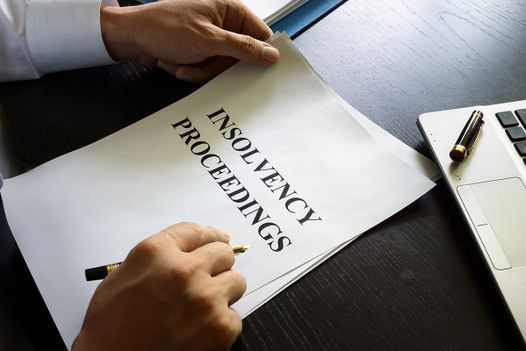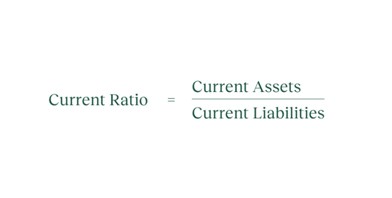Owning your own business is exciting, it is also filled with the prospect of making challenging decisions every day. Faced with survive-or-perish choices, business owners need to think for the long term and draw on different perspectives to make the right decisions. How to deal with insolvency is one of the common challenges that face directors. Here, we look at what it is, what causes it, and the implications involved.
Defining Insolvency
Insolvency refers to when a company or individual unable to repay debts when they are due. When it comes to corporate insolvency, it is the director’s duty to ensure the company does not trade whilst insolvent.
What is corporate insolvency?
Corporate insolvency has legal consequences, especially for company directors, so it’s important to understand exactly when a business is considered insolvent. Insolvency happens when your business is unable to pay all debts when they become due for payment. While this sounds straightforward, in practice, it can be difficult to know exactly when a company has passed the boundary line between short term and resolvable financial issues and legal insolvency. Courts determine insolvency by reviewing the company’s circumstances and various indicators of insolvency. This includes continuing trading losses and limited or insufficient access to alternative finance. If a business is finding it hard to obtain alternative financing because lenders have little confidence in its ability to meet or repay further borrowing, then there is no benefit to other creditors to see it unnecessarily increase their debts. These are major red flags for business insolvency.
Courts might also look at things like liquidity ratios that are below one(divide total liquid assets by amount of short-term borrowing), overdue tax, and a lack of timely and accurate financial information. The liquidity ratio indicates how well short-term borrowing is covered by easily disposed assets, while overdue tax indicates the company is withholding tax payments to preserve cash flow. Other signs of financial difficulty include poor cash flow and unpaid creditors. From a creditor’s perspective, signs of business insolvency could be late payment of invoices, dishonoured payments, or post-dated cheques.
It’s important to differentiate the two types of insolvency; personal and company insolvency. In Australia, personal insolvency occurs when you’re unable to pay your debts when they fall due. There are many options available to individuals experiencing financial hardship.
Corporate insolvency can lead to legal proceedings, including civil penalties, compensation proceedings and criminal charges for directors and other parties. Ifyou’re unsure if your business is trading insolvent, it is best to get in contact with an insolvency practitioner straight away to alleviate any serious consequences.
What causes insolvency?
Insolvency can arise from a wide range of factors. These may include:
- Cash flow issues
- Lack of resources
- Supply and demand issues
- Loss of staff
- Unable to pay creditors on agreed terms
Failure of high valued customers to pay as expected on time or being dragged down by a failing business are other possible causes. Similarly, reliance on a major client who goes bust and leaves invoices unpaid could quickly lead to insolvency for your company. In addition, businesses can become insolvent due to strong competition, deficient financial management, and disputes within management. Abrupt changes like essential staff members leaving and failure of clients on following through can rapidly affect your business’s solvency. Several staff members leaving might set off other team departures if the departure of crucial talent affects your company’s and impact competitiveness and profitability.
Unexpected events like loss of business premises, theft, or vandalism can have a sudden and dramatic impact on your ability to trade. In turn, this affects cash flow, and your business could become insolvent very quickly. Although in some cases this could be mitigated by insurance, a major loss of physical assets can be disruptive enough to cause insolvency.
The above causes can then lead into loss of capital, loss of revenue and loss of credit, which in turn lead directly to insolvency. Multiple problems can compound, leading to payments outstanding, credit issues, and other serious challenges.
What corporate insolvency solutions are available?
Directors have a duty to prevent their companies from incurring further debt when the company becomes insolvent. If you can quickly restructure, refinance, or secure equity funding and recapitalise your business, you should appoint an administrator or liquidator.
Voluntary Administration +
Voluntary administration sees an administrator appointed of the business to navigate a way out of insolvency. Voluntary Administration enables your company to move forward whilst distributing money to creditors through a Deed Of Company Arrangement (DOCA). It also gives you the breathing space to continue trading in a viable way, with the goal to bring the business back to profitability.
Liquidation +
Liquidation is the process of winding up a company’s affairs when the company is no longer viable. This is when the company assets are realised, trading is ceased, and the distribution of proceeds are given to creditors and shareholders. A liquidator is appointed to alleviate stress through each step of liquidation and facilitate the most effective exit.
The main types of liquidation are:
- Creditors Voluntary Liquidation
- Simplified Liquidation
- Members Voluntary Liquidation
- Provisional and Court Liquidation
Get in contact with one of our experts today to discover which type of liquidation is best suited to you.
Receivership +
Receivership is usually initiated by a secured creditor who holds security over some or all of the company’s assets. The receiver will collect and sell enough of the company’s secured assets to enable a partial or full repayment of the debt. The company could continue to exist after receivership has ended.
Getting a fresh financial start for your business
Business insolvency can have legal implications for company directors. If you run a business, you need to be aware of how to know if your company is insolvent and the underlying causes. Company directors in particular should be aware of potential next steps so they can act quickly to address insolvency if it occurs.
Sometimes a fresh financial start requires more extreme action than simply changing up a daily habit – such as entering into voluntary administration, liquidation or restructuring your organisation. That’s where we can help. Speak to one of our experts now for a free consultation, call us on 02 9220 7100.





